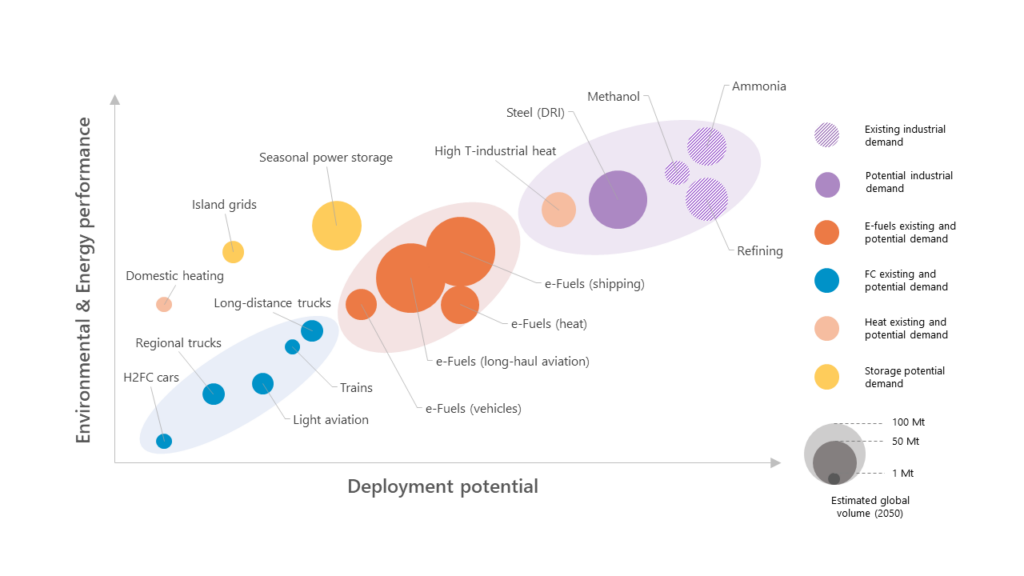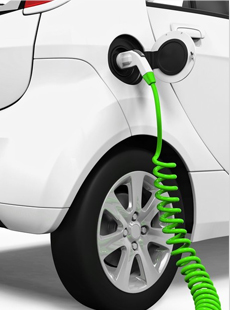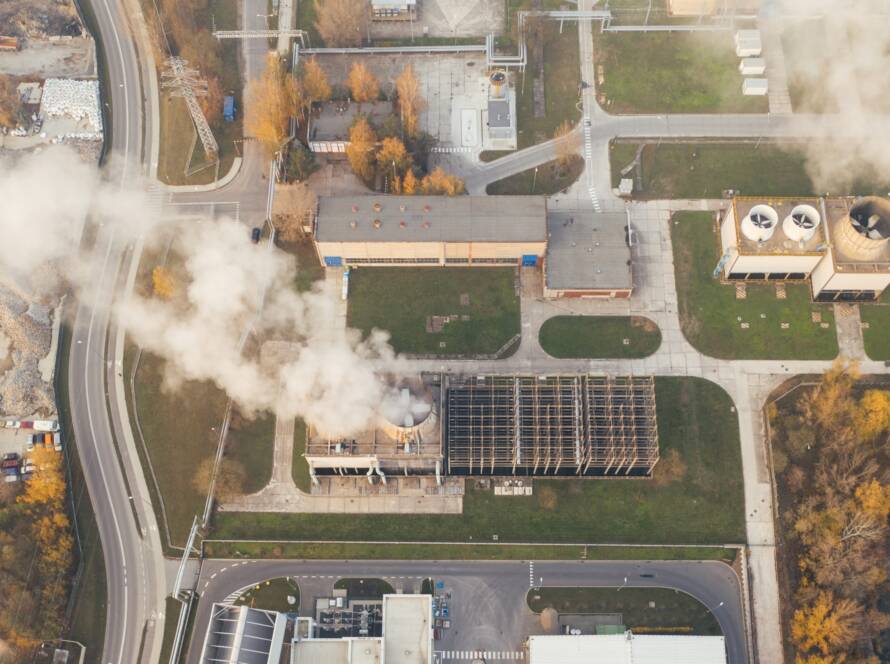Since the middle of the 20th century, there have been periodic waves of enthusiasm for hydrogen as a source of clean energy. However, none of the previous cycles of enthusiasm has succeeded to sustainably develop a global hydrogen economy, in a context characterised by relatively low oil & gas prices.
This time, the unprecedented momentum for clean hydrogen is real, marked by a global political and scientific commitment. Hydrogen is seen as a promising energy carrier to decarbonise existing industrial applications as well as hard-to-abate sectors where electrification won’t be enough. For these new markets, the molecule can be used in its pure form or transformed into e-fuels.
However, the path for hydrogen to reach its full potential is still long, both on supply and demand side.
This study aims to analyse the potential of hydrogen for energy and industry decarbonisation by 2050, the dedicated hydrogen infrastructure that needs to be developed to support this transformation and the regulatory framework that must be put in place to support the transition towards a clean hydrogen economy.
The analyses rely on information gathered through expert interviews as well as on a holistic energy system modelling that integrates a wide range of existing and future energy technologies with the most up to-date knowledge and data. Although the results for 2050 are up to debate, the purpose of this study is to understand the major trends that the development of renewable and low-carbon hydrogen will follow.
In the light of the study results, some of the key takeaways are highlighted below (more details in the report):
- Hydrogen is part of a complex and integrated European energy system where four dimensions should be studied simultaneously: production means and real capacities (renewable and low-carbon H2 production), availability of dedicated transport and storage infrastructures, priorities (including technical and economic feasibility) between the possible applications, and finally the used energy carrier (H2, e-fuels, ammonia, etc.).
- When possible, clean electrification must have priority to decarbonise industry and transport sectors (light mobility for example). However, direct electrification cannot be achieved in all areas of economic activity. In these sectors, renewable and low-carbon hydrogen can play a key role to accelerate the transition towards a low-carbon economy.
- Replacing fossil hydrogen in existing industrial applications is the top priority and should drive the short-term momentum. The real need for clean hydrogen is where no alternative as chemical feedstock is possible (crude oil refining, ammonia, and methanol).
- Although many applications could benefit from clean hydrogen, they cannot all be developed simultaneously. Synergies and incompatibilities between uses must be studied to define the most efficient hydrogen ecosystems to deploy.
- Strategic choices should be based on an objective demand side merit order (see figure below) highlighting the priorities between the different applications. The merit order should integrate two parameters: the environmental and energy performance of each application (including the GHG emission reduction potential) as well as its deployment potential (technical and economic feasibility, availability or not of alternative low-carbon solutions, …).
- Synthetic fuels (or e-fuels) derived from clean hydrogen are an interesting alternative to replace fossil fuels, especially for sectors where direct electrification is a challenge. Three applications are considered relevant for the deployment of e-fuels: shipping, long-distance aviation, and high temperature heating processes.
- Geographic separation of production and end-uses is necessary when low-cost renewable electricity is unavailable at the consumption site. This will require the development of dedicated transport and storage infrastructures at the European scale. More specifically, large-scale geological storage will be the cornerstone for the development of the clean hydrogen economy.
- The development of a European infrastructure is also necessary to enable the emergence of an organised and regulated hydrogen market, that will help scaling up hydrogen economy from local and captive markets to a more global one.
- The European vision should be based on a long-term vision with short term decisions, especially regarding the deployment of hydrogen transport infrastructures. Current initiatives and projects are promising, but not enough to trigger the transformation of the energy system towards a clean hydrogen economy.

FRANÇAIS
Bien que ses propriétés soient connues depuis bien longtemps, il a fallu attendre ces 2 dernières années pour que l’hydrogène connaisse un engouement spectaculaire. Celui-ci pouvant être produit à partir d’électricité renouvelable par électrolyse de l’eau, il est aujourd’hui présenté comme un excellent vecteur énergétique bas carbone. Il peut alors décarboner certaines applications industrielles utilisant de l’hydrogène fossile telles que la production d’ammoniac, de méthanol ou les raffineries, mais il peut aussi massivement contribuer à la décarbonation du secteur énergétique à travers de nouvelles applications telles que la production de carburants synthétiques (ou e-fuels) ou encore la mobilité hydrogène. La route est cependant encore longue avant d’atteindre un écosystème hydrogène économiquement viable. Au-delà du développement de l’offre et la demande, il est nécessaire de mettre en place toute une infrastructure permettant la circulation de ce vecteur prometteur, ainsi que de mettre en place un cadre réglementaire qui lui soit plus favorable.
Yélé Consulting a réalisé une étude holistique du rôle de l’hydrogène comme agent de décarbonation de l’économie européenne à long terme. Cette étude analyse le potentiel de décarbonation de l’hydrogène bas carbone, l’infrastructure associée à développer, ainsi que le cadre réglementaire à mettre en place afin de permettre son envol. Elle repose sur un état de l’art de la littérature scientifique sur le sujet, sur un modèle énergétique permettant d’avoir une vision quantitative de son développement ainsi que sur de nombreux entretiens d’acteurs présents sur la chaine de valeur hydrogène.
Click below to access to the publication / Cliquez ci-dessous pour accéder à la publication :
How-will-hydrogen-shape-a-2050-decarbonised-Europe-Yele.pdf
(58 pages – 8,72 Mo – ENGLIGH)
Authors / Auteurs : Emma Bothorel, Sami Ghardaddou, Antoine Simionesco, Quentin Fontaine, Jacques Millery, Christian Breyer, Dmitrii Bogdanov
Graphic design and communication / Graphisme et communication : Mélanie Ferreira


